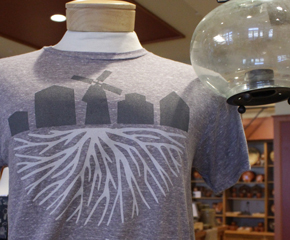Spading Fork, circa 1875
Add to SetSummary
Turning the soil starts the process of crop cultivation. Flipping the top few inches exposes roots of grasses and plants that compete with the crop for nutrients. Breaking up packed dirt increases airflow and moisture retention which aids crop growth. Gardeners used short-handled forks with straight tines (metal points) like this to aerate and flip the soil in their seed beds.
Turning the soil starts the process of crop cultivation. Flipping the top few inches exposes roots of grasses and plants that compete with the crop for nutrients. Breaking up packed dirt increases airflow and moisture retention which aids crop growth. Gardeners used short-handled forks with straight tines (metal points) like this to aerate and flip the soil in their seed beds.
Artifact
Spading fork
Date Made
circa 1875
Place of Creation
Location
Not on exhibit to the public.
Object ID
00.3.16971
Credit
From the Collections of The Henry Ford.
Material
Wood (Plant Material)
Iron (Metal)





